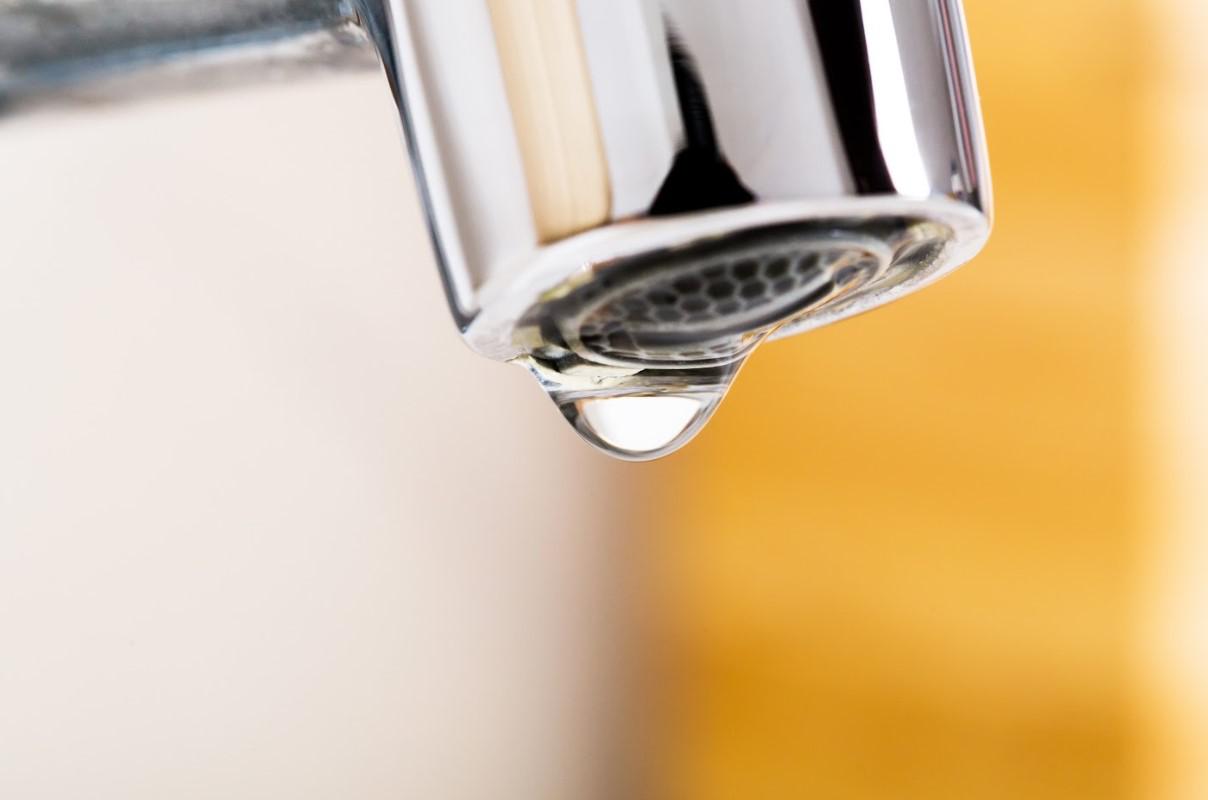
You’re having a peaceful day when suddenly, you hear it. The irritating drip, drip, drip of a leaky faucet. Just when you don’t need one more thing to deal with!
Save your sanity by learning now what may be causing your faucet to leak and whether you need to call the pros about it.
What Seems to Be the Problem?
The first step is figuring out where the leak is coming from. That will help you determine why your faucet leaks and what you can do about it.
So, which part of your faucet is the problem?
Flow from Down Under: A Bathroom Faucet Leaking at the Base
You may notice water flowing out from underneath the very base of your faucet, pooling around the top of your sink. With Muncie’s hard water, it can quickly leave stains that you’ll need to scrub clean. This problem is usually seen on single-handle faucets or two-handle center-set faucets (the handles and spout are all on one connected base). There are two likely causes for a leaking base: the aerator and the cartridge.
The aerator – the screw-on piece at the end of your tap that controls flow – can cause leaks all the way down to the base if it gets clogged. This is an easy fix on your own: just unscrew the aerator cap and clean it out before re-threading it. You can use a Q-tip, a recycled old toothbrush, or a paper towel, plus some vinegar, to clean hard water buildup off your aerator. Soak the part in vinegar for five to fifteen minutes before brushing off the buildup.
If that doesn’t fix the issue, the problem is likely the cartridge. You can replace these yourself, but the cartridge won’t work correctly if it’s not oriented exactly right. To have the job handled right the first time, call a plumber for leaky faucet repair, instead of taking your best guess.
Causes for a Faucet Leaking from the Stem
Your first troubleshooting option is the easiest reason your faucet may leak at the stem: a loose packing nut. The packing nut is the piece that turns when your sink handles turn, allowing water to flow. You can remove the sink stem and tighten the nut yourself, checking to see if that fixes the issue.
If you have a faucet without a connected base, with the stem and handles set directly into the counter, you may have a different issue: the O-ring. The O-ring creates a water-tight seal that usually prevents water from dribbling out at the base. Like all rubber parts, it wears out over time until eventually, it’s no longer water-tight. Depending on their quality, O-rings can last anywhere from one year to several before needing replacement.
If you’re confident with your plumber’s grease, you can replace the O-ring on your own. You’ll have to turn off the water, remove your faucet stem, and remove the old or damaged O-ring. Then, coat the new, same-size O-ring in food-safe plumbers’ grease and place it in the same position as the old one.
To ensure that the O-ring is the only problem (or if you’re not comfortable taking your sink apart), schedule repairs with a professional plumber instead.
Why Your Sink May Be Suffering from a Leaky Faucet Handle
O-rings are also a common culprit if your sink’s handles leak when you run the faucet. The only difference is that the rubber rings that need replacement are under the handles instead of the stem. If you notice your faucet handle leaking and water pooling when the sink runs, either choose to go O-ring shopping or schedule an appointment with an expert.
The Dreaded Drip: A Faucet Leaking from Its Spout
This is the big one that’s often the most annoying: water dripping from the tap even when the faucet is off. Even though the water is coming from the spout, the problem is most likely located beneath the handle. A dripping faucet may have several causes, including:
- A cartridge that needs replacing
- Worn, cracked, or damaged washers or gaskets
- An uneven or pitted retaining nut
- A worn-out O-ring
- A corroded valve seat
Because there are so many reasons your sink can drip, it’s best to call a trained plumber who can identify the exact cause and fix it.
Take It Outside When Your Outdoor Faucet Is Leaking
Don’t just check up on your faucets indoors: Your outdoor spigots can also leak! This will be most noticeable if you find standing water or a muddy patch underneath your outdoor faucet.
You may get leaks if:
- The washers in the spigot are worn out.
- The packing around the handle wears out.
- The pipes or spigot freeze and get damaged during winter.
- The pipes are clogged by debris or Muncie’s hard water.
A professional plumber can diagnose exactly what’s causing the issue, keep an eye out for more extensive damage, and perform repairs.
Call in the Pros to Handle Your Leaking Faucet
A leaking faucet can be a headache. If you just don’t want to deal with it or the problem is beyond the scope of DIY, the experts at Benjamin Franklin Plumbing of Muncie can fix it for you! Our plumbers will find the source of the leak, ensure there’s no extensive damage, and fix the leak on the spot. Call (765) 248-3693 or book online to get that dripping stopped as soon as possible.
